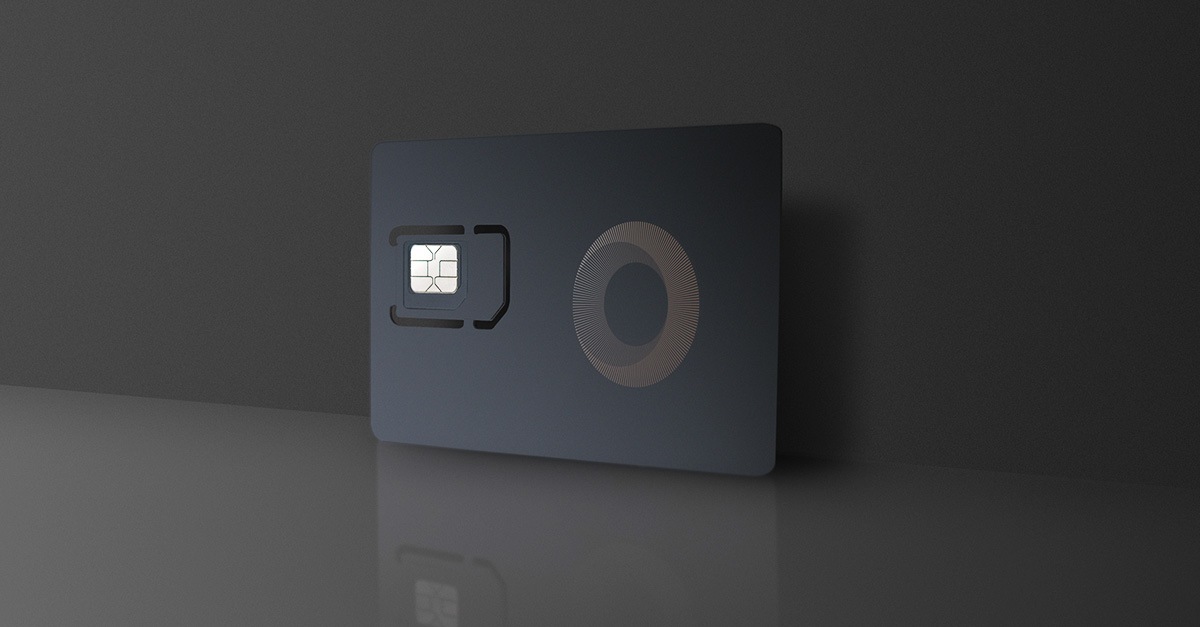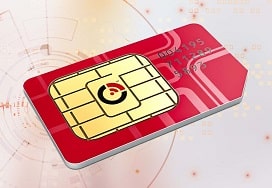IoT Satellite Connectivity Tactics for Overcoming IoT Connectivity Challenges
IoT Cloud Connectivity Overview of Cellular IoT Connectivity
The Internet of Things (IoT) has revolutionized how gadgets connect, talk, and performance. Understanding how IoT connectivity works requires a deep dive into numerous elements and protocols.
At its core, IoT entails the interconnection of devices that communicate over the web. These devices vary from everyday home goods to stylish industrial machinery. The key to their perform lies in seamless connectivity, which allows devices to share knowledge, obtain commands, and operate effectively.
Connectivity options range, but the commonest technologies include Wi-Fi, cellular networks, and low-power wide-area networks (LPWAN). Wi-Fi is prevalent in residential and commercial settings, offering a robust connection for devices that require excessive bandwidth. However, its vary is restricted, making it less appropriate for large-scale IoT implementations where units are distributed over vast areas. Long Range IoT Connectivity.
IoT Connectivity Solutions Market for IoT Connectivity Management Platforms
Cellular networks fill a niche the place Wi-Fi could not suffice. They offer greater protection and can assist gadgets transferring by way of environments, making them perfect for functions like linked automobiles. However, they often require a subscription fee, which can deter cost-sensitive applications.
LPWAN technologies, including LoRaWAN and Sigfox, cater to specialized IoT needs. These networks are designed for long-range communication and minimal power consumption. They operate at low data rates, making them suitable for transmitting small amounts of knowledge over appreciable distances. This attribute is beneficial in situations similar to agriculture, smart cities, and environmental monitoring.
IoT Connectivity Technologies Evaluating IoT Connectivity Technology Pros and Cons

Once units are connected, they leverage numerous communication protocols to work together. Message Queuing Telemetry Transport (MQTT) and Constrained Application Protocol (CoAP) are two well-liked protocols particularly designed for IoT. MQTT operates on a publish/subscribe model, allowing gadgets to ship knowledge to a dealer, which then distributes the information to subscribed purchasers. This model is efficient for scenarios with limited bandwidth.
In contrast, CoAP is designed for constrained environments the place lightweight knowledge transfer is crucial. Its simplicity and low overhead make it perfect for devices with restricted processing power and memory. This protocol is often used in smart house gadgets that must send small packets of knowledge frequently.
Mobile Data Connectivity For IoT Exploring the World of IoT Connectivity

Data plays a pivotal position in IoT connectivity. Each linked device generates huge quantities of information, from environmental sensors to health screens. This knowledge is crucial for analytics, allowing organizations to make informed selections based mostly on consumer behavior, tools performance, and environmental situations.
Data management turns into paramount as the amount of generated information grows. Cloud platforms usually serve as the backbone, providing storage, processing energy, and analytics instruments. These platforms help organizations handle connections, making certain that units ship and obtain data as intended. They additionally accommodate the scalability required to support a rising number of linked devices.
Security is one other important part of IoT connectivity. The proliferation of connected units increases vulnerability to cyber-attacks. Secure communication protocols, encryption techniques, and strong authentication processes are important in protecting sensitive information and ensuring that solely approved devices can access networks.
Interoperability is vital for the success of IoT methods. Different manufacturers may use various communication protocols and hardware architectures. Ensuring that these disparate systems can communicate successfully is essential to realizing the complete potential of IoT. Standardization initiatives goal to create a extra unified framework, facilitating simpler integration and scalability.
Internet Connectivity Principles In IoT Connection Types and IoT Devices Overview

The consumer experience significantly affects the adoption of IoT technologies. Devices that are tough to attach or handle can hinder overall usability. Therefore, simplifying the connectivity process and providing user-friendly interfaces are essential. Smart mobile purposes usually act as gateways to control and monitor gadgets, making the technology more accessible.
Edge computing is gaining traction alongside IoT connectivity. By processing data nearer to where it’s generated, edge computing reduces latency and bandwidth usage. This is especially priceless in functions that require real-time decision-making, corresponding to autonomous autos and industrial automation.
Managed IoT Connectivity Services Choosing the Right IoT Connectivity
The landscape of IoT connectivity is frequently evolving. New technologies and protocols emerge often, promising improved efficiency, lower costs, and higher security. As organizations explore alternatives inside IoT, understanding how connectivity works will remain foundational in harnessing its full potential.
In conclusion, the effective functioning of IoT connectivity is dependent upon varied technologies, protocols, and the seamless interaction between gadgets. From exploring connectivity choices like Wi-Fi, cellular, and LPWAN to understanding communication protocols like MQTT and CoAP, every element performs a important position within the overall IoT ecosystem. As knowledge era continues to extend, so does the need for strong management and safety practices. Ultimately, important advancements in IoT my sources connectivity will shape how individuals and organizations work together with expertise in the coming years.
Connectivity Of IoT Security and Connectivity in IoT
- IoT connectivity primarily depends on a network of gadgets geared up with sensors and software that may talk knowledge over the internet.
- Various communication protocols, corresponding to MQTT, CoAP, and HTTP, facilitate the trade of information between IoT gadgets and central servers.
- Connection methods embody Wi-Fi, Bluetooth, Zigbee, and cellular networks, allowing units to connect depending on their needs and environments.
- Edge computing enhances IoT connectivity by processing information closer to the supply, decreasing latency and bandwidth usage for real-time analysis.
- Cloud platforms play an important position, offering storage and computational sources for large datasets generated by IoT gadgets.
- Security measures, together with encryption and regular software updates, are important to protect information integrity and privateness in IoT ecosystems.
- Device administration protocols ensure that IoT units can be easily monitored, up to date, and built-in into present networks.
- IoT techniques can utilize utility programming interfaces (APIs) to facilitate communication between different devices and current applications seamlessly.
- Interoperability challenges typically arise from the various range of IoT units and standards, requiring strong options for effective collaboration.
- Power efficiency is critical in IoT connectivity, with various methods employed to optimize battery life in low-power units.undefinedWhat is IoT connectivity?
IoT connectivity refers to the strategies and technologies that enable gadgets to communicate with one another and with central techniques over the web. This contains protocols like Wi-Fi, Bluetooth, Zigbee, and cellular networks, allowing for seamless knowledge exchange.
How do units communicate in IoT?
Managed IoT Connectivity Platform Best Practices for IoT Network Design
Devices in IoT communicate via varied protocols and standards that outline how information is transmitted. Common protocols embrace MQTT (Message Queuing Telemetry Transport) and HTTP, which guarantee dependable messaging between units and servers.
What role does the cloud play in IoT connectivity?
The cloud serves as a centralized hub for knowledge storage, processing, and analytics in IoT. It allows gadgets to send knowledge for additional analysis, manage device connectivity, and allow distant entry, enhancing scalability and adaptability in operations.
What are the main challenges of IoT connectivity?
IoT Connectivity Platform Infrastructure and Connectivity for IoT Devices
Key challenges include security issues, reliability of connections, the need for interoperability between completely different devices and protocols, and managing the huge quantity of information generated. Addressing these challenges is essential for effective IoT implementation.
How is knowledge secured in IoT systems?
Data safety in IoT methods is maintained by way of encryption, safe next page protocols, and common software updates. Implementing strong authentication mechanisms also helps to ensure that only licensed gadgets can access the community.
Can IoT devices work offline?
(Connectivity Management Platform IoT)
Connectivity Of IoT Common IoT Connectivity Technologies and Use Cases
While many IoT devices depend on constant web connectivity, some can function offline by way of local processing. They may retailer data regionally and synchronize with the cloud as quickly as a connection is re-established, allowing for continued functionality.
What are the main forms of IoT connectivity options?
Long Range IoT Connectivity Managed Platform for IoT Connectivity
Main types embrace Wi-Fi for local area networks, cellular networks for broader protection, Zigbee and Z-Wave for smart residence applications, and LoRaWAN for long-range communication. The choice is dependent upon factors like range, power consumption, and knowledge requirements.
How does scalability work in IoT connectivity?
Scalability in IoT connectivity refers to the capability to easily add more gadgets without important adjustments to the existing architecture. Cloud platforms and modular protocols assist fast deployment and administration of latest devices as wants develop.
What is edge computing in IoT?
IoT Connectivity Companies Power of Connectivity in IoT
Edge computing refers to processing data closer to the supply of information generation somewhat than relying solely on the cloud. This reduces latency, lessens bandwidth use, and enhances real-time decision-making, making it vital for a lot of IoT functions.
How do I choose the proper connectivity option for my IoT project?
Choosing the proper connectivity possibility includes assessing components like range, data velocity requirements, energy consumption, and deployment environment. Evaluating the particular use case and environment can guide you in choosing the most suitable know-how.